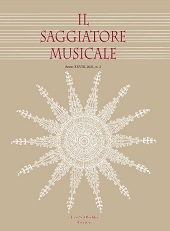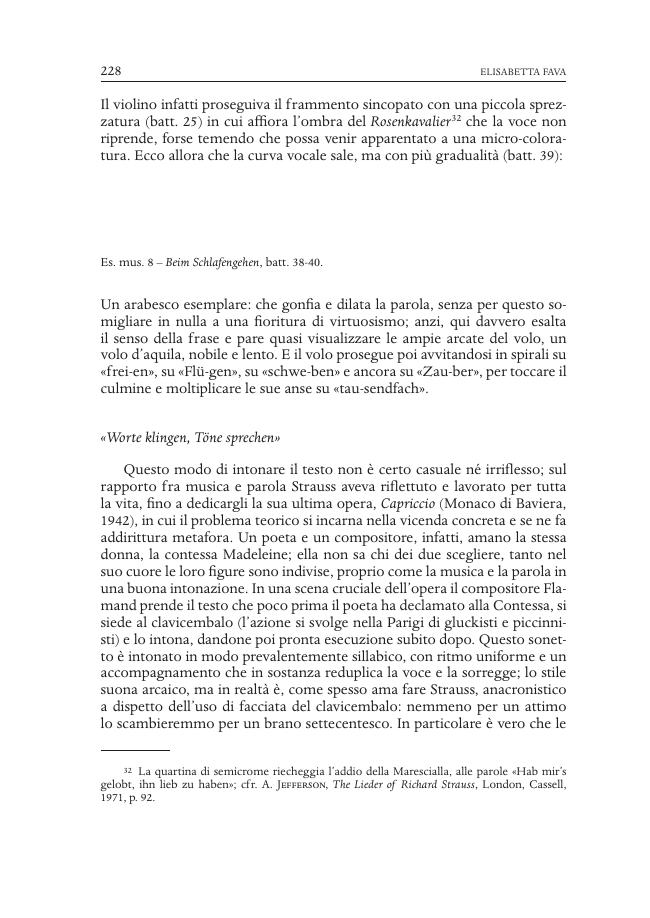2021 - Leo S. Olschki
Article
Digital Version
Download | Copy/paste | NO Printing
Quattro metamorfosi per un congedo : Richard Strauss, l'arabesco e i Vier letzte Lieder
P. 209-244
- When Richard Strauss composed his Vier letzte Lieder (1948) he was 84 and psychologically exhausted by the sufferings of the war years and subsequent isolation. The four songs are not really a cycle and perhaps not even Lieder in the traditional sense of the word (eminent musicologists prefer to call them Gesänge); however, they undoubtedly represent Strauss's farewell to life and art. Sunset, autumn and the approaching night which is first and foremost a leave-taking from life: on these themes, which connect together the three poems by Hermann Hesse and the fourth, Im Abendrot, by Joseph Eichendorff, Strauss resorts to a musical symbolism that trascends the borders of each Lied, and transforms coloraturas into idealised, rarefied arabesques.
- The systematic interweaving of instrumental and vocal singing also reaches such a degree of parity as to make the customary concept of accompaniment wholly inadequate and incongruous. On the one hand, Strauss takes up elements that had been dear to him since his youth, on the other, he rethinks and surpasses them by imagining a vocality that borders on abstraction: the words themselves become mere sound. In the Vier letzte Lieder there is a transparency of writing typical of the late style of the great composer in which the technical dominance is such that it goes unnoticed and becomes a spontaneous reinvention of a past that is irrevocably lost, but still alive in memory: so much so that all of the last Strauss seems to find a synthesis in these four truly ‘last' pages of metamorphosis and farewell. [Publisher's text]
-
Information
DOI: 10.1400/291827
ISSN: 2035-6706
-
In this issue
- A maniera greca : Vitsentzos Kornaros's Erotokritos and the Localisation of Italian Music in Early Modern Crete
- Brisons les fers de l'Italie! : rhétorique du pathos et de la mémoire dans les chansons françaises de la guerre d'Italie de 1859
- Quattro metamorfosi per un congedo : Richard Strauss, l'arabesco e i Vier letzte Lieder
- Codificare Beethoven : sull'utilizzo di MEI nelle edizioni genetiche born digital



